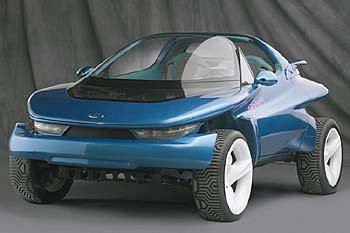1988 Ford Splash
- Story Cars

- Nov 26, 2020
- 2 min read
Jack Telnack, Ford's Vice President - Design, turned four students of Detroit's Center for Creative Studies loose in the summer of 1988 with a simple instruction: design a vehicle they would like to use year-round as well as on a summer weekend.
It was good enough that after the student team completed its work and went back to school, Ford commissioned Autodynamics Corporation of America to build Splash on a front-engined platform. The Splash concept resulted from an all-season concept dune buggy with several innovative and imaginative features. Splash joined Ford Division's auto show truck exhibit for the 1989 season.
The Splash concept's flair is apparent, as is its adaptability. Splash would have driver-adjustable ride height and attitude to adapt from highway cruising to off-road dashes as envisioned in the concept. The body panels above the beltline - the windows, roof, and rear hatch - are removable for summer fun.
Other Splash features announced included retractable high-mount driving lights and unique deployable mud flaps that can be retracted to prevent damage off-road, then deployed to reduce spray and stone damage on the highway. Splash also is compact, built on a 93-inch wheelbase, and only 143 inches long by 70 inches wide.
The Splash concept's signature feature is in its interior: coverings for the four occupants' seats are made from neoprene rubber wet suit material. When Splash was introduced, the neoprene seats brought many comments and were a daring departure from the velours then in vogue in production interiors. The brilliant blue accents didn't hurt the interior's impression, either. The rest of the interior design is stark and practical. Instruments and controls are grouped in small enclosures behind the steering wheel and a small projecting binnacle in the center of the dash. The body design features a dramatic upswept step that captures the dune buggy look, accented with a separate spoiler at the bottom of the rear hatch glass.
Source: www.christies.com
Images: Ford

%20(4)_edited.png)




































Comments